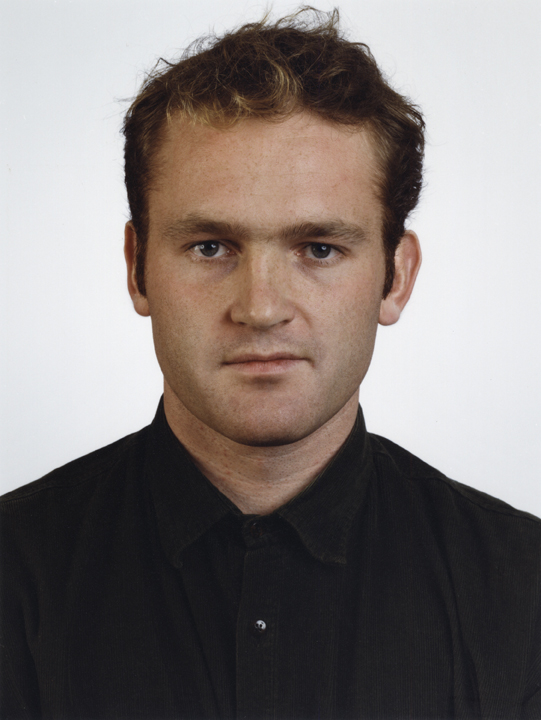
Thomas Ruff, Martin Vossing, 1988. Chromogenic color print, 85 × 65 × 4 inches (215.9 × 165.1 × 10.2cm). Gift of Sandra and Gerald Fineberg. Courtesy the artist and David Zwirner, New York/London. © Thomas Ruff
Thomas Ruff is one of a trio of artists who have transformed the medium of photography in contemporary art. He and fellow Kunstakademie Düsseldorf students Andreas Gursky and Thomas Struth emerged in Germany in the late 1980s and since then have influenced a rising generation of photographers. The three are known for exceedingly large-scale pictures and impossible (though realistic) images benefiting from digital enhancement. Their work in turn emerges from the Neue Sachlichkeit, or new objectivity, a movement of the 1920s and ’30s in Germany. Photographers associated with the movement, such as August Sander and Albert Renger-Patsch, presented reality as only a camera can––that is, in a deceptively straightforward and objective way.
In the 1980s, Thomas Ruff created a series of portraits of classmates and friends from the Kunstakademie Düsseldorf, a renowned art school led at the time by photographers Bernd and Hilla Becher. Ruff’s portraits present each figure against a plain white background, in the manner of identification photography. While portraits are often staged to reveal aspects of a subject’s personal history, Ruff provides little beyond the person’s name as the title. This photograph is of Martin Vossing, a man we know little about. Ruff’s inexpressive approach to portraiture is in line with that of the Bechers’ work on such architectural features as water tanks.
Alongside portrait works by Philip-Lorca diCorcia, Rineke Dijkstra, Nan Goldin, Boris Mikhailov, and Collier Schorr, Ruff’s Martin Vossing forms part of a strong collection of works by important contemporary photographers.
2012.14